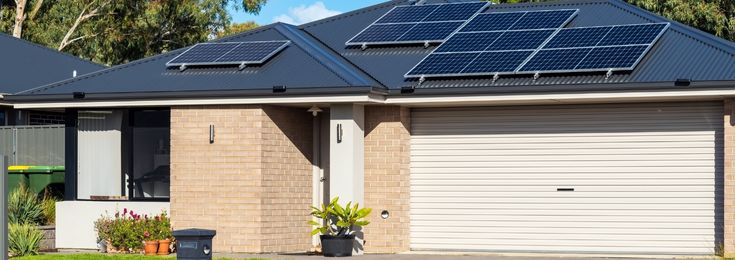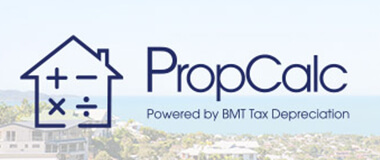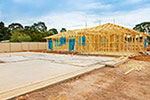Capital gains tax and depreciation
We are frequently asked if depreciation is worth claiming due to its effect on capital gains tax. Depreciation reduces a property’s cost base and therefore impacts the size of a capital gain (or loss) upon the sale of an investment property. However, depreciation should still be claimed. In this case study we show why.

Case study
John earns an income of $120,000 per annum. He purchased a new investment property for $750,000, which included $36,000 in depreciable plant and equipment assets. Purchase costs were $30,000. He spent $6,000 improving the property and $10,000 on legal fees. Over the time John owns the property he can claim $25,000 in plant and equipment depreciation (Division 40) and $35,000 in capital works deductions (Division 43). John sells his investment property after five years for $900,000, including depreciable plant and equipment assets worth $14,000. As such, the 50% capital gains tax (CGT) discount applies.
Scenario 1: Capital outcome when depreciation is not claimed
Cost base = $750,000 + $30,000 + $6,000 – $36,000 + $10,000 = $760,000
Capital gain = $900,000 – $14,000 – $760,000 = $126,000
Discounted capital gain = $126,000/2 = $63,000
In this scenario $63,000 will be added to John’s taxable income and taxed at his marginal tax rate in Year 5.
Scenario 2: Capital outcome when depreciation is claimed
Cost base = $750,000 + $30,000 + $6,000 – $36,000 – $35,000 + $10,000 = $725,000
Capital gain = $900,000 – $14,000 – $725,000 = $161,000
Discounted capital gain = $161,000/2 = $80,500
In this scenario $80,500 will be added to John’s taxable income and taxed at his marginal tax rate in Year 5. This is $17,500 more than if John had not claimed depreciation and capital works over the past five years. At face value, it looks like there will be a big difference in the amount of tax payable when claiming depreciation. But let’s see how this plays out over the five years.
Scenario 1: Total tax payable when not claiming depreciation
| Year 1 | Year 2 | Year 3 | Year 4 | Year 5 | |
| Income | $120,000 | $120,000 | $120,000 | $120,000 | $120,000 |
| Deductions | $10,000 | $10,000 | $10,000 | $10,000 | $10,000 |
| Division 40 | $0 | $0 | $0 | $0 | $0 |
| Division 43 | $0 | $0 | $0 | $0 | $0 |
| Capital gain/loss | $0 | $0 | $0 | $0 | $63,000 |
| Taxable income | $110,000 | $110,000 | $110,000 | $110,000 | $173,000 |
| Tax payable | $26,217 | $26,217 | $26,217 | $26,217 | $49,077 |
Scenario 2: Total tax payable when claiming depreciation
| Year 1 | Year 2 | Year 3 | Year 4 | Year 5 | |
| Income | $120,000 | $120,000 | $120,000 | $120,000 | $120,000 |
| Deductions | $10,000 | $10,000 | $10,000 | $10,000 | $10,000 |
| Division 40 | $7,500 | $5,500 | $4,500 | $4,000 | $3,500 |
| Division 43 | $7,000 | $7,000 | $7,000 | $7,000 | $7,000 |
| Capital gain/loss | $0 | $0 | $0 | $0 | $80,500 |
| Taxable income | $95,500 | $97,500 | $98,500 | $99,000 | $180,000 |
| Tax payable | $21,507 | $22,155 | $22,480 | $22,642 | $51,667 |
When looking at the complete scenario claiming Divisions 40 and 43 has reduced John’s annual tax payable so that total tax payable over five years is $140,451 compared to $153,945. This is $13,494 less because he claimed depreciation when he owned the property.
So, you can see that claiming depreciation each year can improve both the annual cash flow and the overall tax outcome. It’s also worth noting that a capital gain is never guaranteed when a property is sold, so it’s best to claim the deductions along the way as a reliable way to optimise cash flow. An investor’s plans can change, which can alter the trajectory of a property, as well as potential capital gains tax. Such changes may involve holding the property for longer than originally planned or converting the property into a primary place of residence. Maximising cash flow also allows the owners to reduce debt or input the extra cash flow into other investments or other necessary expenses, adding another positive element to claiming depreciation.
How is CGT calculated?
Capital gain (loss) = proceeds - cost base Where cost base = A + B + C - D - E + F
A is the purchase price
B is the purchase costs
C is the cost of property improvements
D is the cost of the depreciable assets acquired with the property
E is the capital works deductions
F is legal fees
To work out the CGT, apply relevant discounts to the capital gain and add the result to taxable income in the year of sale. Then apply the marginal tax rate.
BMT recommends that investors speak to their accountant on individual tax matters.



























